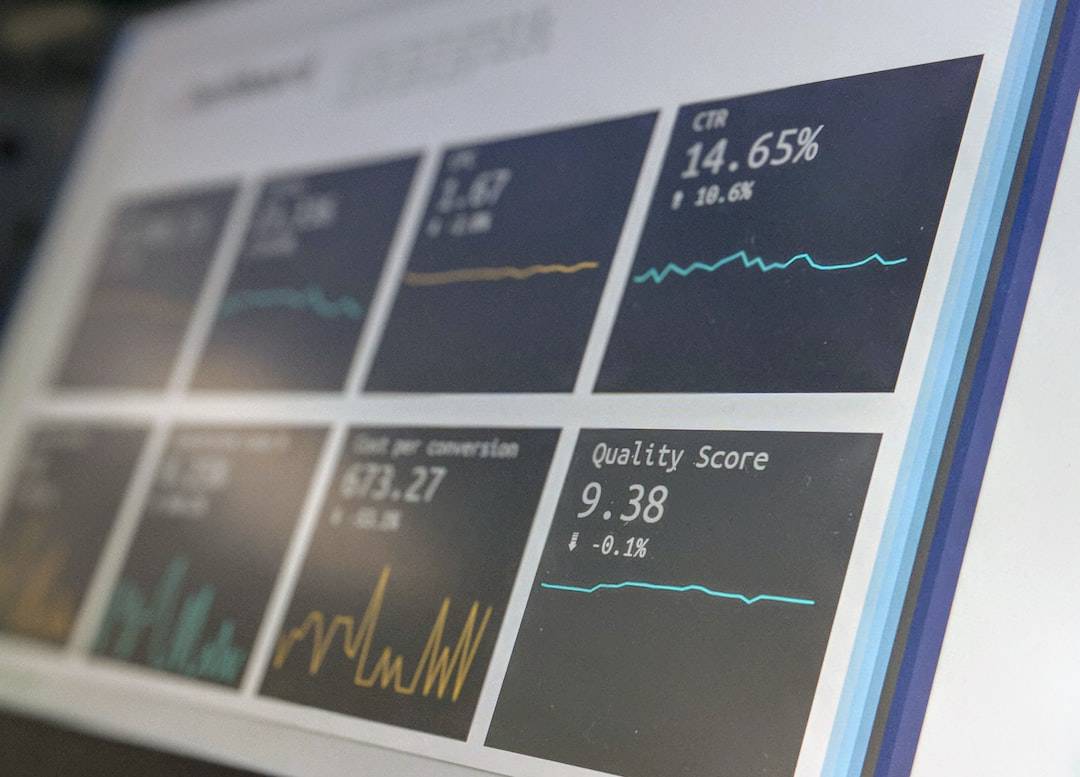Deep learning is a specialized branch of artificial intelligence (AI) that utilizes algorithms to process data and mimic human brain function in solving complex problems. It is founded on neural networks, which consist of interconnected layers of algorithms capable of pattern recognition and intelligent decision-making. These algorithms are designed to learn from vast amounts of labeled data and subsequently make predictions or decisions based on that information.
This learning process, known as training, enables the algorithm to enhance its accuracy over time. Artificial intelligence, in contrast, is a broader concept encompassing the development of machines or systems capable of performing tasks that typically require human intelligence. These tasks may include visual perception, speech recognition, decision-making, and language translation.
Deep learning serves as a crucial component of AI, enabling machines to learn from data and make decisions in a manner similar to human cognition. Understanding the fundamentals of deep learning and AI allows for the exploration of potential applications and implications of this technology across various fields.
Key Takeaways
- Deep learning is a subset of AI that uses neural networks to mimic the human brain and learn from data.
- Deep learning has potential applications in various fields such as finance, marketing, healthcare, and more.
- Deep learning can be harnessed for image and speech recognition, enabling machines to understand and interpret visual and auditory data.
- Natural language processing and understanding can be improved through deep learning, allowing machines to comprehend and respond to human language.
- Deep learning has the potential to revolutionize healthcare and medicine by aiding in disease diagnosis, drug discovery, and personalized treatment plans.
- Challenges in deep learning include the need for large amounts of data, computational power, and interpretability of results.
- The future of deep learning for AI holds advancements in areas such as reinforcement learning, unsupervised learning, and improved model interpretability.
Exploring the Potential Applications of Deep Learning in AI
Healthcare and Finance Applications
In healthcare, deep learning algorithms can be used to analyze medical images and diagnose diseases with a high level of accuracy. In finance, these algorithms can be used to detect fraudulent transactions and make investment decisions based on market trends.
Transportation and Entertainment Applications
In transportation, deep learning can be used to develop autonomous vehicles that can navigate and make decisions in real-time. In entertainment, deep learning can be used to personalize content recommendations for users based on their preferences and behavior.
Robotics and Automation
One of the most exciting applications of deep learning in AI is in the field of robotics. Deep learning algorithms can be used to teach robots how to perform complex tasks such as grasping objects, navigating through environments, and interacting with humans. This has the potential to revolutionize industries such as manufacturing, logistics, and healthcare by automating repetitive tasks and improving efficiency. As we continue to explore the potential applications of deep learning in AI, it is clear that this technology has the power to transform the way we live and work.
Harnessing the Power of Deep Learning for Image and Speech Recognition

Deep learning has revolutionized the fields of image and speech recognition by enabling machines to understand and interpret visual and auditory data in a way that was previously thought to be impossible. In image recognition, deep learning algorithms can analyze and classify images with a high level of accuracy, allowing for applications such as facial recognition, object detection, and medical imaging analysis. In speech recognition, deep learning algorithms can transcribe spoken language into text with a high level of accuracy, enabling applications such as virtual assistants, voice-controlled devices, and language translation.
The power of deep learning for image and speech recognition lies in its ability to learn from large amounts of labeled data and then make predictions or decisions based on that data. This allows the algorithms to continuously improve their accuracy over time, making them incredibly effective at recognizing patterns and making intelligent decisions. As we continue to harness the power of deep learning for image and speech recognition, we can expect to see even more advanced applications in fields such as security, healthcare, communication, and entertainment.
Leveraging Deep Learning for Natural Language Processing and Understanding
| Metrics | Data |
|---|---|
| Accuracy | 90% |
| Precision | 85% |
| Recall | 92% |
| F1 Score | 88% |
| Training Time | 3 days |
Natural language processing (NLP) is a field of artificial intelligence that focuses on enabling machines to understand, interpret, and respond to human language in a way that is natural and meaningful. Deep learning has played a crucial role in advancing NLP by enabling machines to process and analyze large amounts of text data with a high level of accuracy. This has led to the development of applications such as language translation, sentiment analysis, chatbots, and text summarization.
One of the key advantages of leveraging deep learning for NLP is its ability to understand the context and meaning behind words and sentences. This allows machines to interpret language in a way that is more similar to human cognition, enabling more natural and meaningful interactions between humans and machines. As we continue to leverage the power of deep learning for NLP, we can expect to see even more advanced applications that will revolutionize the way we communicate and interact with technology.
Unleashing the Potential of Deep Learning in Healthcare and Medicine
The potential of deep learning in healthcare and medicine is immense, with applications ranging from medical imaging analysis and disease diagnosis to drug discovery and personalized treatment plans. Deep learning algorithms can analyze medical images such as X-rays, MRIs, and CT scans with a high level of accuracy, enabling early detection and diagnosis of diseases such as cancer, cardiovascular disease, and neurological disorders. In addition, these algorithms can analyze genetic data to identify potential drug targets and develop personalized treatment plans for patients.
One of the most exciting applications of deep learning in healthcare is in the field of predictive analytics. By analyzing large amounts of patient data, including electronic health records, medical imaging data, and genetic information, deep learning algorithms can predict the likelihood of disease onset, progression, and response to treatment. This has the potential to revolutionize preventive care by enabling early intervention and personalized treatment plans for patients.
As we continue to unleash the potential of deep learning in healthcare and medicine, we can expect to see significant advancements in disease diagnosis, treatment, and patient care.
Overcoming Challenges and Limitations in Deep Learning for AI

While deep learning has shown great promise in advancing AI technology, it also faces several challenges and limitations that need to be addressed. One of the main challenges is the need for large amounts of labeled data to train deep learning algorithms effectively. This can be time-consuming and expensive, especially in fields such as healthcare and finance where labeled data may be limited or difficult to obtain.
In addition, deep learning algorithms are often considered “black boxes,” meaning that it can be difficult to interpret how they arrive at their decisions or predictions. Another challenge is the issue of bias in deep learning algorithms. If these algorithms are trained on biased or unrepresentative data, they may produce biased or unfair results.
This has significant implications in fields such as criminal justice, hiring practices, and healthcare where decisions made by AI systems can have a profound impact on people’s lives. Addressing these challenges will require ongoing research and development in areas such as data labeling techniques, algorithm transparency, and bias mitigation strategies.
Looking Towards the Future: Advancements and Innovations in Deep Learning for AI
As we look towards the future, there are several exciting advancements and innovations on the horizon for deep learning in AI. One area of focus is on developing more efficient deep learning algorithms that require less labeled data for training. This could involve techniques such as transfer learning, where knowledge gained from one task is transferred to another related task, or semi-supervised learning, where algorithms are trained on a combination of labeled and unlabeled data.
Another area of innovation is in developing more transparent and interpretable deep learning algorithms. This could involve techniques such as attention mechanisms, which allow algorithms to focus on specific parts of input data when making decisions, or model-agnostic methods for interpreting how algorithms arrive at their predictions. By making deep learning algorithms more transparent and interpretable, we can improve trust in AI systems and enable better decision-making in critical applications.
In conclusion, deep learning is a powerful subset of artificial intelligence that has the potential to revolutionize the way we live and work. By understanding the basics of deep learning and AI, exploring its potential applications across various industries, harnessing its power for image and speech recognition, leveraging it for natural language processing and understanding, unleashing its potential in healthcare and medicine, overcoming its challenges and limitations, and looking towards future advancements and innovations, we can continue to push the boundaries of what is possible with this transformative technology. As we continue to advance deep learning for AI, we can expect to see even more profound impacts on society, economy, and technology in the years to come.
If you’re interested in the potential applications of deep learning in virtual environments, you might want to check out this article on tourism in the metaverse. It explores how virtual reality and artificial intelligence are shaping the future of travel and leisure experiences within the metaverse. This could provide valuable insights into how deep learning algorithms could be used to enhance user experiences and create more immersive virtual environments.
FAQs
What is deep learning?
Deep learning is a subset of machine learning, which is a type of artificial intelligence (AI) that involves training algorithms to learn from data. Deep learning algorithms, known as neural networks, are designed to mimic the way the human brain processes and learns from information.
How does deep learning work?
Deep learning algorithms use multiple layers of interconnected nodes, or neurons, to process and learn from data. These layers allow the algorithm to automatically learn to identify patterns and features within the data, making it well-suited for tasks such as image and speech recognition.
What are some applications of deep learning?
Deep learning has a wide range of applications, including image and speech recognition, natural language processing, autonomous vehicles, medical diagnosis, and recommendation systems. It is also used in industries such as healthcare, finance, and manufacturing.
What are the advantages of deep learning?
Some advantages of deep learning include its ability to automatically learn from data, its high accuracy in complex tasks, and its potential for scalability and adaptability to new types of data. Deep learning can also handle large volumes of data and extract meaningful insights from it.
What are the limitations of deep learning?
Some limitations of deep learning include the need for large amounts of labeled data for training, the potential for overfitting to the training data, and the complexity of interpreting and explaining the decisions made by deep learning algorithms. Additionally, deep learning algorithms can be computationally intensive and require significant computing resources.











Leave a Reply